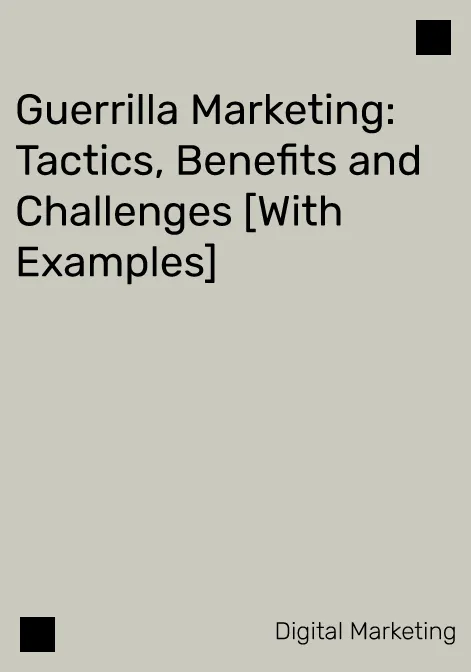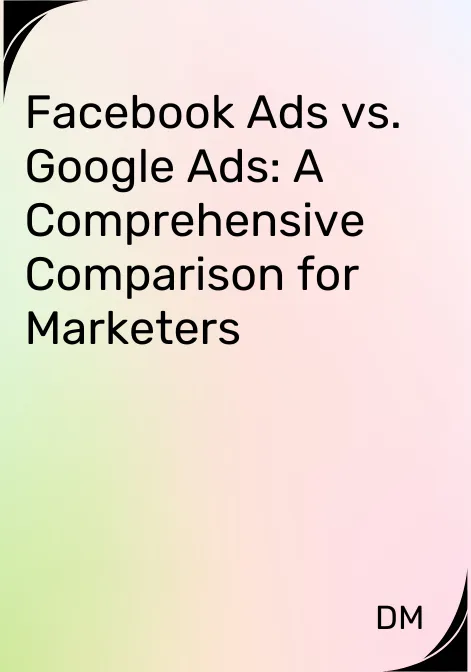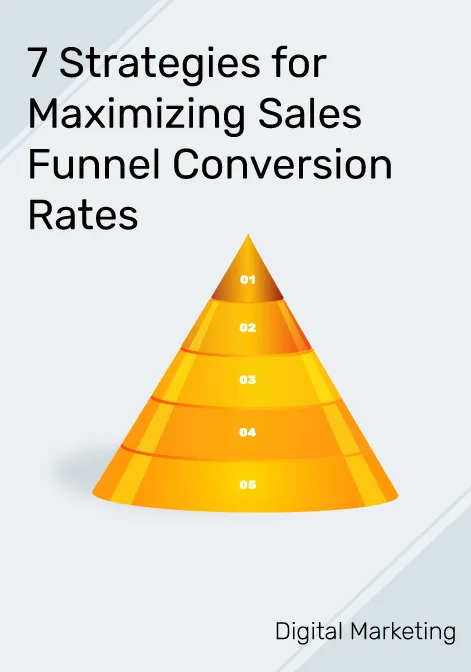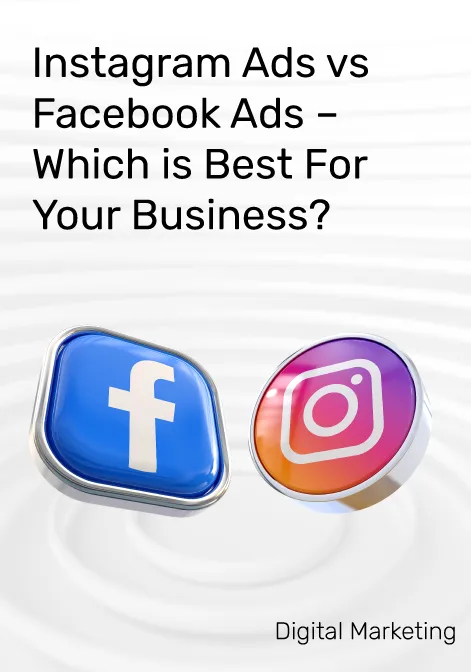What is Guerrilla Marketing?
Guerrilla marketing is an advertising strategy that focuses on unconventional methods to promote a product or service. Unlike traditional marketing, which often relies on big budgets and mainstream media (TV, print, radio), guerrilla marketing seeks to create unique, memorable experiences that engage consumers in unexpected ways.
Some key characteristics of guerrilla marketing campaigns include:
- Creativity and innovation
- Targeted and localized approaches
- Viral potential
- Use of unconventional mediums (e.g., street art, flash mobs)
- Focus on experiential marketing
Creativity and innovation are at the heart of successful guerrilla marketing campaigns. They require marketing professionals to think outside the box and come up with original ideas that will capture the attention of their target audience. This could include anything from interactive installations to unexpected pop-up events or even social media challenges.
Key Principles of Guerrilla Marketing
While guerrilla marketing strategies may vary widely from one campaign to another, several core principles that support their success:
1. Understand Your Target Audience
Before launching a guerrilla marketing campaign, it’s crucial to conduct thorough research to understand the preferences, behaviours, and demographics of your target audience. This information will help you customise your approach and ensure it resonates with them.
2. Tell a Gripping Story
Storytelling is a powerful marketing technique that can transform a simple message into a memorable experience. By weaving a narrative into your guerrilla marketing campaign, you can stir up emotions and encourage consumers to share their experiences with others.
3. Create Memorable Experiences
One of the key goals of guerrilla marketing is to create experiences that resonate with consumers and leave a lasting impression. This could involve designing interactive installations, hosting unique events, or using unexpected mediums to convey your message.
Guerrilla Marketing Tactics and Examples
Guerrilla marketing campaigns can take many forms. Below are some of the most common tactics used by marketing professionals, along with successful real-world examples for each:
1. Ambient Marketing
This type of guerrilla marketing involves placing your brand message in a unique or unexpected location. The goal is to catch the attention of consumers in a way that feels natural and unforced.
A well-known example of ambient marketing is the “Toblerone” campaign, which featured a giant 3D representation of the Swiss chocolate’s triangular shape placed in a train station. The installation not only piqued the interest of commuters but also served as a clever reminder of the product itself.
2. Experiential Marketing
Experiential marketing focuses on creating immersive experiences that allow consumers to interact with a brand in meaningful ways. These campaigns often involve events or installations designed to engage multiple senses.
One popular example of experiential marketing is the “Immersive Van Gogh” exhibition. The exhibition invited visitors to step inside the world of Vincent van Gogh, experiencing his art in a fully immersive environment. This engaging experience left attendees with a deeper connection to both the artist and the organizing museum.
3. Viral Marketing
Viral marketing aims to create content that is so entertaining, informative, or relatable that it encourages consumers to share it with their networks. While viral campaigns can be produced through traditional mediums, many of the most successful ones have emerged from guerrilla marketing efforts.
A famous example of a viral marketing campaign is the “Ice Bucket Challenge” in support of ALS research. This challenge encouraged participants to douse themselves in cold water and share videos of their experiences on social media, leading to widespread awareness of the cause and significant fundraising efforts.
4. Stealth Marketing
Stealth marketing involves promoting a product or service in a subtle, often undercover manner. This tactic can be particularly effective when targeting consumers who are resistant to traditional advertising methods.
One well-known example of stealth marketing is the “The Blair Witch Project” campaign. The film’s creators strategically planted false stories and rumors online, convincing audiences that the found footage they were about to see was genuine. This approach built immense curiosity and intrigue around the movie before its release.
5. Street Marketing
Street marketing takes place in public spaces and often involves direct interaction between marketers and consumers. This technique can range from handing out samples, hosting live events, or even employing brand ambassadors to engage passersby.
A notable example of street marketing is Red Bull’s “Stratos” campaign, which involved a skydiver jumping from the edge of space. This attention-grabbing stunt not only showcased the brand’s adventurous spirit but also generated extensive media coverage and online buzz.
Pros and Cons of Each Tactic
While each guerrilla marketing tactic has its unique advantages, they also come with certain drawbacks. Here’s a quick overview of the pros and cons associated with the tactics discussed above:
| Tactic | Pros | Cons |
| Ambient | Cost-effective
Memorable experiences Can go viral |
May be overlooked
Requires creativity and innovation |
| Experiential | Engages multiple senses
Builds emotional connections |
Can be expensive
Requires significant planning |
| Viral | Wide reach
Cost-effective |
Hard to predict virality
May not align with brand values |
| Stealth | Subtle and non-intrusive
Can generate buzz |
Ethical concerns
Requires careful execution |
| Street | Direct consumer interaction
Builds brand loyalty |
Weather-dependent
Requires active participation from the brand |
Understanding the strengths and weaknesses of each tactic can help you choose the best approach for your specific guerrilla marketing campaign.
Benefits of Guerrilla Marketing
Guerrilla marketing offers several benefits for small businesses and brands looking to make a big impact with limited resources. Here are some of the key advantages of adopting this unconventional marketing strategy:
1. Cost-effectiveness
One of the main reasons small businesses and startups turn to guerrilla marketing is its cost-effectiveness. Unlike traditional marketing methods that often require significant budgets for media placements and production costs, guerrilla marketing campaigns can be executed on a much smaller scale.
By prioritizing creativity and innovation over financial investment, businesses can achieve impressive results without breaking the bank. For instance, a local bakery might create an eye-catching pavement chalk art installation that showcases their new pastries, while a larger company may devise a viral social media campaign. Both approaches have the potential to generate considerable consumer interest at minimal expense.
2. Increased Brand Awareness and Visibility
When executed successfully, guerrilla marketing campaigns can dramatically increase brand awareness and visibility. By creating unique, memorable experiences that capture the attention of consumers, businesses can encourage them to share their experiences with others, effectively expanding their reach beyond the original target audience.
For example, a cleverly placed advertisement or an unexpected street performance can prompt passersby to take photos and share them on social media, amplifying the brand’s presence in a way that traditional advertising may not.
3. Enhancing Customer Engagement and Loyalty
Guerrilla marketing is particularly effective at fostering customer engagement and loyalty. By creating immersive experiences that encourage direct interaction between the brand and consumers, businesses can leave lasting impressions and build emotional connections.
For instance, a trendy café might host an interactive pop-up event that combines coffee tastings with live music. Guests not only enjoy a unique experience but also associate positive memories with the café, increasing the likelihood of repeat visits and long-term loyalty.
4. Generating Word-of-Mouth Marketing
Word-of-mouth marketing is one of the most powerful forms of advertising, and guerrilla marketing tactics are particularly adept at generating buzz. When consumers encounter intriguing or entertaining marketing campaigns, they are more likely to share their experiences with friends, family, and social media followers.
This organic, unsolicited promotion is often perceived as more trustworthy and credible than traditional advertising, making it a valuable asset for businesses looking to expand their reach. For example, a well-executed guerrilla marketing stunt may inspire consumers to discuss the brand on social media or in person, ultimately leading to increased interest and sales.
Challenges and Considerations
While guerrilla marketing presents many opportunities for small businesses to make a big impact, it also comes with certain challenges and considerations. Understanding these potential pitfalls can help companies make informed decisions and better prepare for successful campaigns.
1. Potential Risks
Despite its many benefits, guerrilla marketing campaigns can carry risks. These may include public backlash, negative media coverage, or even legal issues if the campaign is perceived as inappropriate or disruptive.
To mitigate these risks, businesses should conduct thorough research and planning before launching their campaigns. This may involve seeking input from focus groups or conducting surveys to measure public sentiment, as well as reviewing relevant laws and regulations to ensure compliance.
2. Legal and Ethical Considerations
Legal and ethical considerations are crucial when planning guerrilla marketing campaigns. Some marketing tactics may run afoul of local laws or regulations, while others may raise ethical concerns regarding privacy, consent, or the potential for negative public perception.
To address these potential issues, businesses should consult with legal experts and ensure they adhere to industry best practices. Additionally, considering the ethical implications of their marketing strategies can help businesses maintain a positive brand image and avoid potential pitfalls.
3. Measuring Impact
One of the biggest challenges with guerrilla marketing is measuring the impact of campaigns. Unlike traditional advertising methods that often provide clear metrics (e.g., impressions, clicks), guerrilla marketing campaigns may not have easily quantifiable outcomes.
To overcome this challenge, businesses should establish clear objectives before launching their campaigns and identify key performance indicators (KPIs) that align with those objectives. These KPIs could include tracking media coverage, social media engagement, and customer sentiment through surveys or online reviews.
Measuring the Impact of Guerrilla Marketing
Although guerrilla marketing campaigns may be less straightforward to measure than traditional advertising methods, several metrics can provide valuable insights into their effectiveness. By tracking these metrics, businesses can assess the impact of their campaigns and make data-driven decisions for future marketing efforts.
1. Traditional Metrics
Some traditional metrics commonly used to measure the success of marketing campaigns include:
- Media Coverage: Tracking the amount and quality of media coverage generated by a guerrilla marketing campaign can help businesses gauge its effectiveness. Positive press coverage can significantly increase brand awareness and credibility, while negative coverage may indicate potential issues that need to be addressed.
- Social Media Engagement: Monitoring social media engagement (likes, shares, comments) related to a guerrilla marketing campaign can provide insights into its reach and resonance with consumers. An increase in engagement typically indicates greater interest and awareness of the brand.
- Customer Sentiment: Conducting surveys or analysing online reviews can help businesses measure customer sentiment before, during, and after a guerrilla marketing campaign. Positive shifts in sentiment can suggest that the campaign successfully resonated with the target audience.
2. Non-Traditional Metrics
In addition to traditional metrics, businesses can also employ non-traditional approaches to measuring the impact of their guerrilla marketing campaigns. These may include:
- Website Traffic: Analysing website traffic before and after a guerrilla marketing campaign can help businesses assess its impact on consumer interest. If a significant increase in traffic coincides with the launch of the campaign, it may indicate that the marketing efforts successfully attracted attention.
- Brand Mentions: Using social listening tools to monitor brand mentions across various online platforms can provide valuable insights into the reach and impact of a guerrilla marketing campaign. An increase in brand mentions may indicate heightened consumer interest, while sentiment analysis can reveal how consumers perceive the brand in relation to the campaign.
- Sales Data: Tracking sales data before, during, and after a guerrilla marketing campaign can help businesses quantify its impact on revenue. A notable increase in sales during or after the campaign may suggest that the marketing efforts effectively drove consumer interest and action.
3. Setting Clear Objectives
To effectively measure the impact of guerrilla marketing campaigns, businesses should establish clear objectives before launching their efforts. These objectives will guide the selection of relevant metrics and provide a framework for evaluating the campaign’s success.
Common objectives for guerrilla marketing campaigns may include:
- Increasing brand awareness
- Generating social media engagement
- Driving sales or website traffic
- Enhancing customer sentiment
By setting specific, measurable, achievable, relevant, and time-bound (SMART) objectives, businesses can better assess the effectiveness of their guerrilla marketing campaigns and make data-driven decisions for future marketing efforts.
Guerrilla Marketing in the Digital Age
The rise of digital technology and social media has significantly impacted the way businesses approach guerrilla marketing. Today, many successful guerrilla marketing campaigns seamlessly integrate digital elements to enhance their reach and effectiveness.
1. Integration of Digital Elements
Incorporating digital elements into guerrilla marketing campaigns allows businesses to amplify their reach and engage consumers in new ways. This may involve using augmented reality (AR), virtual reality (VR), or interactive installations that leverage digital technology.
For example, a recent guerrilla marketing campaign by IKEA utilized augmented reality to bring their in-store displays to life. Customers could use their smartphones to scan QR codes and view 3D animations of how furniture would look in their homes, providing an engaging and memorable experience that also encouraged purchases.
2. Role of Social Media
Social media plays a crucial role in amplifying the impact of guerrilla marketing campaigns. By encouraging consumers to share their experiences on social media, businesses can extend the reach of their guerrilla marketing efforts beyond the initial target audience.
To leverage social media effectively, businesses should create shareable content that encourages user-generated content (UGC) and social sharing. This may involve developing hashtags, running contests, or collaborating with influencers to promote the campaign.
For example, Coca-Cola’s “Share a Coke” campaign invited consumers to find bottles with their names on them and share photos on social media. This campaign not only generated significant buzz and engagement but also encouraged consumers to engage with the product in a fun and personal way.
3. Examples of Successful Digital Guerrilla Marketing Campaigns
Several successful guerrilla marketing campaigns have harnessed the power of digital technology and social media to enhance their effectiveness. Some notable examples include:
- Spotify’s “2018 Goals” campaign encouraged users to share their unique playlists on social media, resulting in widespread engagement and brand awareness. By tapping into the power of user-generated content and social sharing, Spotify effectively turned its guerrilla marketing efforts into a viral sensation.
- The ALS Association’s “Ice Bucket Challenge” became a global phenomenon, raising millions of dollars for ALS research. By encouraging participants to share videos of themselves taking the challenge on social media, the campaign effectively combined guerrilla marketing with digital elements to maximize its reach and impact.
These examples demonstrate how integrating digital elements into guerrilla marketing campaigns can significantly enhance their effectiveness and reach.
Ethical Considerations in Guerrilla Marketing
While guerrilla marketing can be an effective and impactful strategy, it also raises ethical considerations that businesses must address to avoid negative publicity and maintain a positive brand image. Here are some key ethical concerns related to guerrilla marketing, along with ways businesses can ensure their marketing efforts remain ethical and responsible:
1. Importance of Ethical Behavior
Maintaining ethical behavior in guerrilla marketing is crucial for several reasons:
- Reputation Management and Brand Image
Unethical marketing practices can damage a company’s reputation and erode consumer trust. In an era of social media and instant communication, negative publicity can spread rapidly, leading to long-lasting consequences for the brand.
- Compliance with Regulations and Guidelines
Many countries have laws and regulations governing advertising and marketing practices. Adhering to these guidelines not only protects businesses from legal repercussions but also demonstrates their commitment to ethical behavior and social responsibility.
- Long-Term Success
Ethical marketing practices contribute to the long-term success of a business. By building trust and goodwill among consumers, businesses can create lasting relationships that drive customer loyalty and repeat business.
2. Examples of Ethical and Unethical Guerrilla Marketing Campaigns
Several guerrilla marketing campaigns serve as examples of ethical and unethical practices:
- Ethical Example: Dove’s “Real Beauty” Campaign
Dove’s “Real Beauty” campaign is a prime example of ethical guerrilla marketing. By challenging traditional beauty standards and promoting body positivity, Dove successfully resonated with consumers while adhering to ethical marketing principles.
- Unethical Example: Pepsi’s “Live for Now” Ad
Pepsi’s “Live for Now” advertisement featuring Kendall Jenner faced significant backlash for its perceived exploitation of social justice movements. Critics argued that the ad trivialised serious social issues for commercial gain, illustrating the potential consequences of unethical marketing practices.
3. Avoiding Negative Publicity
To avoid negative publicity and maintain a positive brand image, businesses should consider the following strategies when planning guerrilla marketing campaigns:
- Conduct Thorough Research
Researching the target audience, cultural context, and current social issues can help businesses identify potential pitfalls and develop marketing strategies that resonate positively with consumers.
- Seek Input from Diverse Perspectives
Involving individuals with varying backgrounds, opinions, and experiences in the planning process can help businesses identify potential ethical concerns and develop marketing strategies that are sensitive to diverse perspectives.
- Monitor Public Reaction and Adapt Accordingly
Once a guerrilla marketing campaign is launched, businesses should actively monitor public reaction and be prepared to adapt their marketing strategies if necessary. This may involve addressing negative feedback, clarifying misunderstandings, or even retracting the campaign if it proves excessively controversial.
By considering these ethical considerations and implementing proactive strategies, businesses can ensure their guerrilla marketing campaigns remain both impactful and responsible, ultimately contributing to long-term success and positive brand image.
Conclusion
Guerrilla marketing offers a creative and cost-effective approach for small businesses to promote their products and services. By understanding the key principles and tactics outlined in this comprehensive guide, you can develop impactful campaigns that engage your target audience, increase brand awareness, and drive customer loyalty.
In today’s competitive market, exploring innovative marketing strategies like guerrilla marketing is essential for staying ahead of the curve and achieving business growth. We encourage you to experiment with the tactics discussed in this article and discover how they can grow your marketing efforts.
Now is the perfect time to get started. Ready to revolutionise your marketing strategy?




